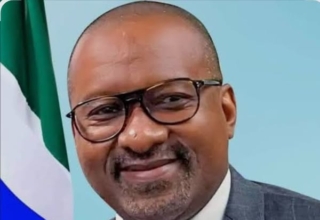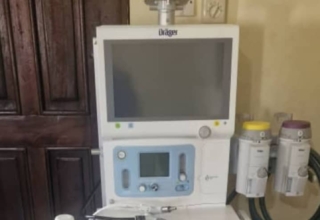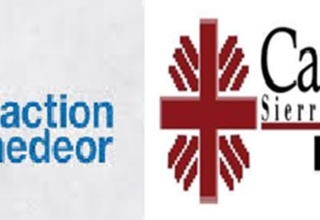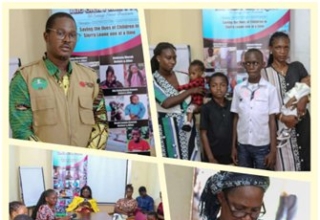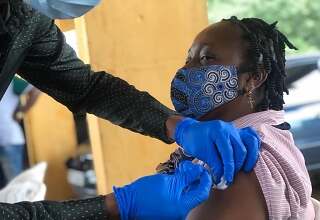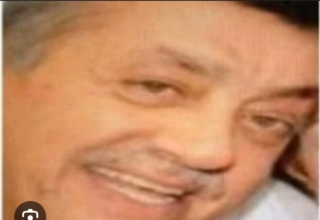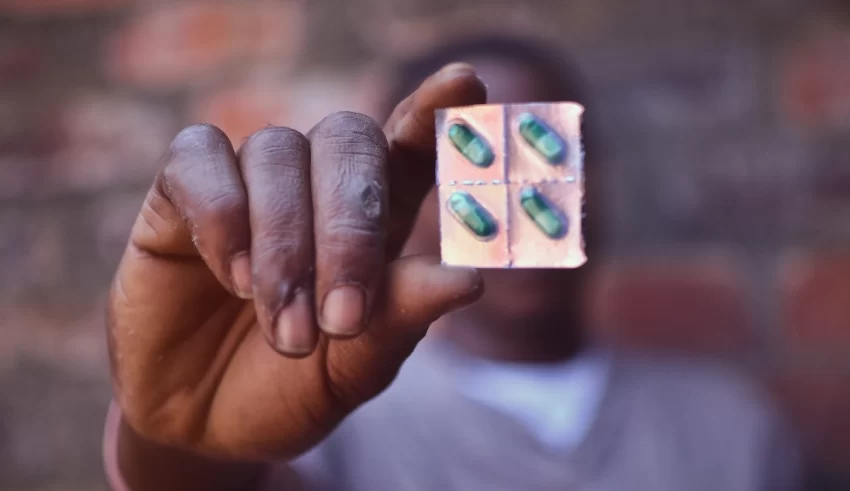
𝐁𝐲 𝐀𝐛𝐚𝐬𝐬 𝐂𝐨𝐥𝐥𝐢𝐞𝐫, 𝐅𝐫𝐞𝐞𝐭𝐨𝐰𝐧
Sierra Leone’s evolving illicit-drug consumption, and its attendant substance-use disorders and unreported drug-overdose deaths, is unmistakable and depressing. Many youths on street corners; learners and instructors in secondary schools, colleges, and universities; bankers, lawyers, and medical workers; drivers of keke and okada; and public officials, including police officers, soldiers, civil servants, and elective office holders, you guessed it, have essentially been ensnared by a frightening wave of addictive drugs. Affordability has risen exponentially with a myriad of available substances of comparative prices, offering increasing numbers of users a range of drugs of choice. Nothing evidences the growing menace more than the now-familiar daily scenes of drug users casually “lighting up” in public spaces, their gaunt- and scruffy-looking frames evoking images in Walking Dead movies, even as the public passes by hardly batting an eyelid. Do not take my word for these claims; they can be put the lie to with independent investigation.
Illegal drugs are not new in Sierra Leone. Except, in years past until the country’s 1991 civil conflict, “natural” substances such as cannabis (linked to mental illness) and kumbayjara (a poisonous local plant), among others, were the main drugs of choice. Today, “kush,” a drug not ranked among the world’s ten most addictive substances, receives daily flak as though its riddance would render the country drug-free. The fact is that, in addition to older and previously unknown drugs, newer and even more potent synthetic (lab- or man-made) substances are now among the go-to drugs for both male and female users, irrespective of socioeconomic background: heroin; cocaine; crack cocaine; ecstasy; tramadol; and pharmaceuticals that offer health benefits as well as potentially serious risks, like opioids (used to treat moderate-to-severe pain). The users’ creativity has added a new menu of unlikely ingestible items—like catalytic converters for cars; pampas; embalming fluid; adhesives, like Evo Stik glue for mending shoes; among others—that also induce the highs or intoxication. Needless to say, the rising hard-drug use could ultimately gravely imperil the future, the next generation of leaders, of the country.
But first, context matters as to how Sierra Leone got to this point: For decades, West Africa was mainly a transshipment hub for South American and Central Asian drugs (heroin and cocaine, initially) destined for richer western consumers, particularly in the USA. But the USA’s “war on drugs,” of sorts, evidenced by the stepping-up of its tracking, disruption, and seizure of narcotics abroad, has had the unintended consequence of local demand building up for the stashed drugs in West Africa, occasioning the region’s budding drug markets. Estimated at up to $650 billion (Global Financial Integrity, 2022), representing 8% of world trade, the insanely lucrative global drug trade can only get bigger and more developing countries, like Sierra Leone, sucked in with dire consequences. For instance, the drug trafficking boom in particularly hard-hit West Africa is estimated to be upwards of 50 metric tons annually (UN World Drug Report). As might be expected, 708 kilograms of cocaine, worth $30 million, was confiscated in Sierra Leone in 2008, the largest ever found on the country’s soil; also, 4.6 tons of cocaine (worth $157 million) and another weighing 1.5 tons (valued at $60 million) have since been seized on coastal Sierra Leone. These figures may well represent only a tiny fraction of the actual amount of illegal drugs in circulation.
If anything, few countries remain unaffected by drugs. Take Liberia and Nigeria, for example, where a combined 2.4 tons of cocaine seizure, worth $378 million, was made in late 2022. In Liberia, in fact, the alarming trend of rapidly growing communities of wasted drug users, known as Zogoes, prompted the recent passage of a stiff legislation that imposes life sentence, among others, on anyone dealing in, or importing, or distributing drugs. Not even Muslim or Sharia-ruled countries with some of the strictest penalties for drug traffickers, such as the death sentence, have been spared—United Arab Emirates, for example, counts among the top ten countries that use the most illicit drugs. The USA, the world’s wealthiest nation whose local and global antidrug fight is second to none, is no exception, either; it is in a league of its own! For example, 110,000 people in the USA died from drug overdoses in 2022 (USA Centers for Disease Control); also, per ABC News (June 14, 2023), the US state of California recently confiscated 4.2 kilos of the potent drug fentanyl, enough to kill potentially 2.1 million people, almost three times the population of San Francisco City. Most recently, on July 4, 2023, the USA’s Independence Day, a “baggie” of cocaine was found in an area of the White House, the US president’s official residence and office.
Countries in the throes of drugs have typically responded as though they could legislate, or criminalize, their way out of it. If that were possible, the USA’s incarceration of 350,000 people for various drug offenses, including for possessing a few grams of drugs, out of the country’s 1.8 million prison population, could have produced a noticeable downward trend in its drug epidemic; but that is not the case, as drug-overdose deaths become all-too common and harrowing scenes of the human destruction caused by drugs play out daily on many USA city streets, like Philadelphia’s Kensington Avenue, which YouTube clip is a must-watch.
Still, legislation has a significant role to play, but only when targeted. The 6th parliament of Sierra Leone could learn from Liberia by enhancing the country’s existing drug laws to include life sentence for international dealers and distributors; such legislation should also cover local enablers, or compromised public officials, as well as state forfeiture of the funds and assets of traffickers, distributors, and their in-country associates. The two-bit local peddlers of sachet-wrapped drugs, when caught, should serve some time, but rehabilitated post-incarceration and provided opportunities to keep them from retuning to selling. Laws protecting whistle blowers, and providing handsome rewards for them, must be enacted and widely disseminated to encourage reporting of drug activities that lead to arrests. Additionally, a special court for drugs will not only ensure speedy trial of cases but also convey the seriousness attached to the fight against drugs.
Perhaps the most effective response to the drug problem is an aggressive government-led national awareness-raising campaign; it will disrupt the high demand, because without demand, the drug markets become unprofitable and shrink. The campaign—targeted at parents, students, and the general public about the obvious red flags and dangerous consequences of substance abuse—will save many young people from negative peer pressure (the quickest pathway to drugs), cutting down on demand with fewer buyers and users. Nothing trumps the positive upbringing of children more than effective supervision; hence, providing parents (especially), school authorities, religious organizations and leaders, and mentors with information as basic as to what to look for in children, wards, students, congregants, and mentees— the kinds of friends they keep; changing dress codes, like wearing nonprescription category 4 sunglasses to conceal drugged eyes; declining personal hygiene; and even music choice; abnormal sleep and eating patterns; falling school and college attendance and grades; unusual incidents of petty thefts, often for money to buy drugs; and more—will help them detect the warning signs and be able to intervene early before the extremely difficult-to-handle addiction phase sets in (early detection and intervention prevents or reverses most addictions).
Education and awareness positively change public perceptions and attitudes about substance-use disorders as simply a matter of personal choice. Therefore, disseminating relevant information and knowledge about addiction as a disease that responds to treatment, like cancer or diabetes or heart disease, makes for a caring and loving response to, not rejection of, addicts—all the more for faiths that outright condemn intoxication and addicts as doomed to everlasting perdition, whereas they could preach life-saving sermons about the obvious worldly dangers of drugs and encourage young congregants and others to stay drug-free, or avail treatment for those who become addicted. Local artists, social media influencers, and celebrities who are role models not into drugs will be vital in the awareness-raising drive.
Just as important is a law—or, given the urgency of the moment, initially a presidential directive—that mandates testing for government employees (teachers, law enforcement, soldiers, etc.) and, in particular, prospective higher-education applicants as well as continuing students. Who pays for the tests, how often they are administered, whether or not they should be administered on everyone in a targeted population or, for cost considerations, only randomly on a select few (such as suspected drug users), can be debated. Not up for debate is the rate at which students in higher education ingest drugs presently, almost like candy, as one concerned university lecturer put it. Needless to say, the country can ill-afford drugs laying waste to its massive human capital development investment, much less compromising its women’s reproductive health, with serious repercussions for unborn Sierra Leonean children (the country’s future), given that cocaine, heroin, ecstasy, cannabis, and other recreational drugs can result in permanent damage with reproduction and fertility; this is all the more for female students, who are now into drugs nearly as much as male students.
Thus, the prospect of a positive drug test could act as a strong disincentive for many students to quit or not indulge in the first place, aware that they could face consequences such as college-admission denial, or expulsion, or suspension for months, perhaps years, until treatment is sought. Otherwise, the grades and completion rates of ever-increasing numbers of students will get worse, resulting in a pipeline of poorly performing graduates and unfit role models in the work place.
No effort should be spared, or considered inconsequential, in stemming the further progression of drug use in Sierra Leone. Dedicated and affordable drug treatment programs for those who present with the severest of substance-use disorders, in tandem with rapid training of addiction counsellors and mental health personnel, should form a crucial component of the effort as well; this is because drugs are unlikely to disappear, or be put under control, any time soon. Not with the corruptible influence of the vast sums of money that flow from the ever-ballooning drug trade, a clear and present danger to national security. Guinea Bissau, which in the aught earned the infamous UN distinction as a narco state, Africa’s first, is an important lesson in virtually limitless drug money bringing a country almost to its knees; with drug money surpassing Guinea Bissau’s national budget, the country descended into chaos from some of the bloodiest coups and counter coups, dubbed the “cocaine coups,” as unscrupulous individuals sought to take over government as a pathway to enriching themselves from protection fees paid by the traffickers and dealers.
Guinea Bissau may be different, and Sierra Leone may well have dodged the infamy of the widely covered 2008 Lungi airport cocaine bust, in which names of some highly placed public officials appeared in the local press and leaked foreign diplomatic dispatches. But rife speculation about the recent point-blank shooting death, and in broad daylight, of a senior police officer in Makeni, Assistant Superintendent Mathew Banya, if as widely speculated is connected to the deceased’s reported fierce antidrug policing, should serve as an unambiguous wake-up call to the drug traffickers’ increasing boldness to preserve their turf at any cost; add to that the real prospect of “free” drug money influencing top public officials for the protection of traffickers and dealers and the serious threat that might pose to national security, as an ex-senior national intelligence operative alluded in Freetown recently.
Given this grave threat, inaction is not an option.


